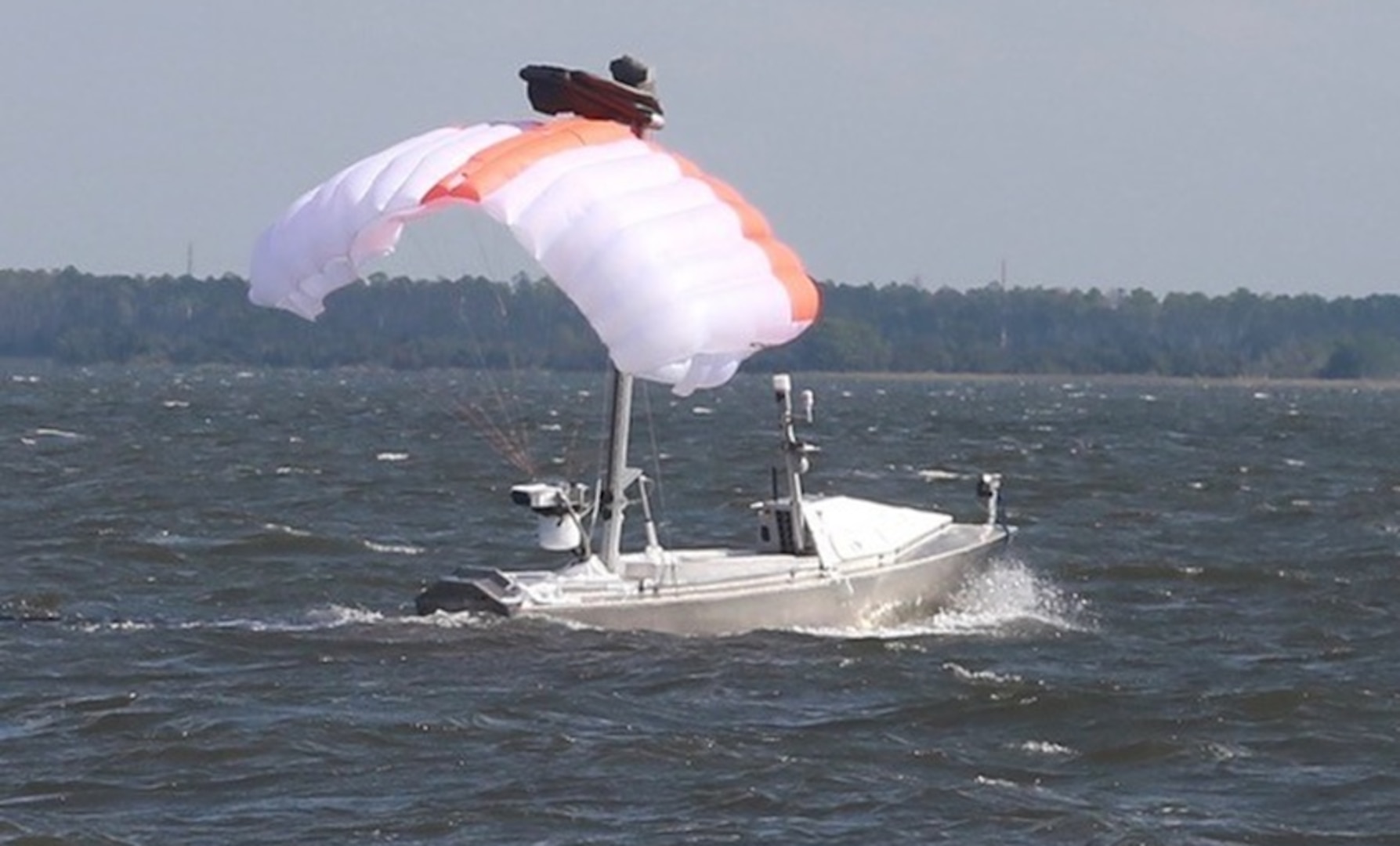Summary
The U.S. Navy has taken delivery of the first four Global Autonomous Reconnaissance Crafts (GARCs) for Unmanned Surface Vessel Squadron 3 (USVRON 3) in San Diego. These 16-foot vessels, built by Maritime Applied Physics Corporation, are designed to enhance the Navy's capabilities in maritime security, surveillance, and potentially weapons deployment. The GARCs can travel up to 40 mph, have a range of over 400 nautical miles at 30 knots, and can operate in sea state four conditions.
The Navy is investing heavily in unmanned surface vessels (USVs) of various sizes, with the GARCs being the smallest. Medium-sized USVs (45-190 feet) are being developed for intelligence, surveillance, and reconnaissance, while large USVs (200-300 feet) are envisioned as missile launchers. The use of USVs in the Ukraine-Russia war has highlighted their effectiveness in denying enemy access and reducing risks to human life.
Additionally, the Navy completed a demonstration of the GARC and the Towed Airborne Lift of Naval Systems (TALONS), a parafoil-based system designed to relay data between the Mine Countermeasure USV and the Littoral Combat Ship (LCS). This prototype aims to enhance communication ranges for the LCS Mine Countermeasure Mission Package, potentially reducing the time needed to clear a minefield.
Navy puts squadron of experimental sea drones in San Diego - The San Diego Union-Tribune
Navy puts squadron of experimental sea drones in San Diego - The San Diego Union-Tribune
The Navy deepened its fast-growing investment in sea drones Friday, creating a squadron of small, experimental uncrewed surface vessels, or USVs, that could be used for maritime security and possibly the firing of weapons.
The so-called Global Autonomous Reconnaissance Crafts, or GARCs, are 16 feet long and capable of traveling up to 40 mph in favorable sea conditions. The squadron will have four of them to start, but that number will mushroom as the Navy hustles to add hundreds more throughout the fleet.
The initial vessels cost about $750,000 apiece — a number that’s expected to fall once they’re mass-produced.
The Navy is already testing medium-sized USVs, which can range from 45 feet to 190 feet in length. They are largely seen as future intelligence, surveillance and reconnaissance platforms.
Development also is already underway on a large USV, which would likely range from 200 to 300 feet in length and serve as a missile launcher.
The small version is being introduced last inpart because the Navy is still figuring out how it can best serve the fleet’s interests when in it is lowered into the ocean from a large, crewed warship.
The experimentation is being pushed by global events, particularly the war between Ukraine and Russia.
“We have seen a dramatic increase in the use, the capabilities and the lethality of unmanned systems in Ukraine, a nation with a small navy,” said Vice Admiral Brendan McLane, commander of Naval Surface Forces. “They have sunk or damaged 16 Russian ships and have been able to deny the Russian Navy the use of the northwestern Black Sea.”
Most of the USVs used by Ukraine have been small sea drones that are comparatively hard to see on radar, enabling them to sneak into some areas — a very appealing feature.
The USVs “reduce the risk to human life in high-threat areas,” McLane said Friday. “They provide persistent surveillance over areas of interest, and because they give warfighters an inherent advantage.”
The Navy can operate the GARCs by remote controller and program them to roam the ocean autonomously.
Some of the new sea drones have already sailed all the way to San Clemente Island. The Navy said Friday that the USVs will soon be dispatched far greater distances.
US Navy receives new GARC drone boats
The U.S. Navy took delivery of a batch of Global Autonomous Reconnaissance Crafts (GARCs), with the first four vessels being delivered to Unmanned Surface Vessel Squadron 3 (USVRON 3).
Manufactured by the Maritime Applied Physics Corporation, these 16-foot (4.8m) drone boats are poised to revolutionize naval operational capabilities, promising seamless integration across surface, expeditionary, and joint maritime forces.
The unmanned GARC boasts a full load displacement of 3,600 lbs, a top speed exceeding 35 knots, and a formidable range of over 400 nautical miles at 30 knots (or over 700 nm at 6 knots). Designed to withstand sea state four conditions, these vessels exhibit remarkable versatility and endurance.
LCS Mission Module Program Office Completes At-Sea Demonstration of GARC/TALONS System

PHOTO INFORMATION
PANAMA CITY, Fla. – The Navy completed a demonstration of the Greenough Advanced Rescue Craft (GARC) and Towed Airborne Lift of Naval Systems (TALONS), the service announced Nov. 25.
The GARC/TALONS prototype is being evaluated to provide enhanced communication ranges for the Littoral Combat Ship (LCS) Mine Countermeasure (MCM) Mission Package that could reduce the time to clear a minefield.
“This achievement marks an important landmark in the potential acquisition of an enhanced communication range solution for the Navy,” said Capt. Godfrey Weekes, LCS Mission Module program manager. “From concept to at-sea demonstration within 10 months is quite remarkable and is in alignment with senior Navy direction toward rapid acquisition.”
Program Executive Office Unmanned and Small Combatants’ LCS Mission Module Program Office worked with the Naval Information Warfare Center, Atlantic to utilize an Other Transactional Authority to competitively award a contract to develop, build, integrate and demonstrate the prototype. The week-long demonstration was completed Oct. 6.
- NAVSEA -




No comments:
Post a Comment